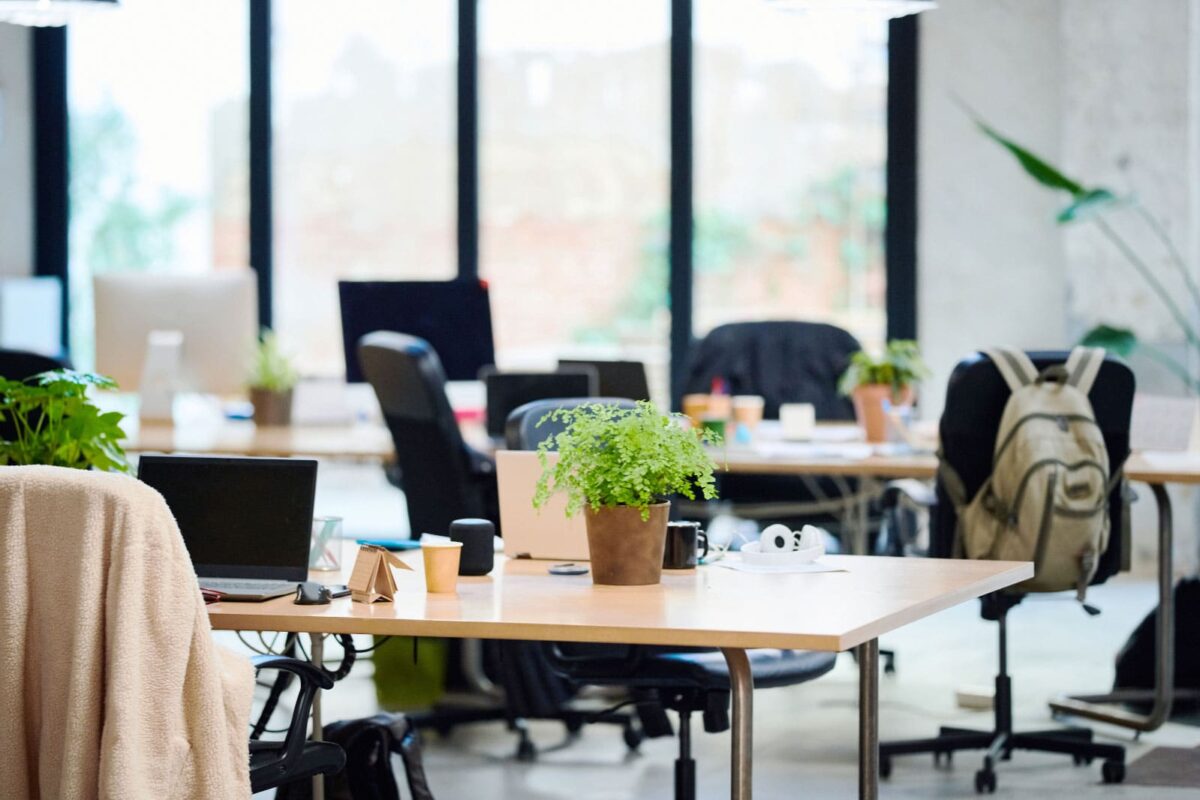We don’t always think of people in mechanical terms. But our bodies are essentially a complex system, engineered to perform under a range of conditions. What makes the human system remarkable is that it can generally keep functioning as long as there is sufficient oxygen and a temperature that sits within a certain range. We can go from frigid, snowy conditions to a small, hot, stuffy room without significant problems.
Performing optimally, as opposed to simply functioning, is a whole different story. To work at our best, people need a stable working environment without random variables.
If it is too hot or cold, our discomfort can mess with our focus. If we get sudden dumps of cold air into our workspace, or if the temperature control is erratic as we move around our work environment, it can be a huge distraction.
Other sensory systems can be impacted by our environment too. A lack of fresh air can make it too stuffy. Strong odours from kitchen areas or photocopiers or rubbish bins are annoying and unpleasant. VOCs (Volatile Organic Compounds) released from manmade timbers, carpets and paints can be an irritant. Even the noise from an air conditioning system can slowly chip away at productivity.
Some might argue that all of this is simply the realities of work; that people need to put on a jumper and get on with it. But beneath the more obvious environmental irritations there are invisible risks to productivity, employee health and, ultimately, profitability.
For example, air conditioning systems can dry the air out. Low humidity is often noticed first by contact lens wearers, as it dries their eyes out, but it can also trigger dry throats and coughs that lead to sick days. And an AC system can spread airborne bacteria, meaning one sick worker can be patient zero for a workplace outbreak that disrupts workflows and deadlines.
There are plenty of ways to address these issues around heating, cooling and clean, fresh air. Unfortunately, the pace and priorities of many modern businesses don’t allow for a holistic and truly effective solution. Whether it is poor design, a tight budget or a project that is pushed through too quickly, the supposed solution can worsen the situation or only temporarily stave off the negative impact.
Another potential risk is from increasing office density, while persisting with systems designed for a smaller number of occupants. While the finance department sees one equation (more people/m2 = less rent) they are missing out on a whole lot of other mathematical variables. Additional sets of lungs alter air distribution patterns. Higher occupancy increases infection risks. Pumping in more outside air can support a healthier environment, but at an increased energy cost.
Is it even possible to create a healthy, happy work environment? Of course. And going back to the question in this article’s title, a key part of the answer is already there: ‘tenants’. Like any kind of modern design project, rethinking a workplace’s heating, ventilation and air conditioning (HVAC) needs starts with establishing user needs. Understanding the wellbeing expectations, usage requirements and planned occupancy levels are essential to designing a space that works for everyone in it.
It also needs to work for the person paying the bills, of course, and for the sustainability efforts of the tenant business or building owner. That’s why a careful, upfront design process should always seek to balance energy consumption with tenant health and wellbeing needs.
Costs – both for energy consumption and capital – should always be viewed from a whole of life perspective. Choosing to cut costs and underinvest upfront with an HVAC solution will almost always result in higher running costs and workplace health compromises, that eat away at productivity and profitability, for the life of the building.
The technology involved is continually evolving in ways that promote better cost efficiencies that pay off over the life of a building. The ability to automatically monitor occupancy, CO2 levels and biological markers allows for real-time adjustments to the amount of energy different systems are using. And keeping buildings healthy is more effective than ever with measures such as UV-C and antibacterial treatments able to be incorporated into HVAC systems.
What is the secret to healthy buildings and happy tenants? At Jacksons, our engineers have the experience to know there is no one answer. There are multiple elements to balance. As engineers, designers, energy specialists and industry trainers, we have a long history of working with built environments and gathering tenant input on what works. This feedback loop informs all new design projects. We also know a lot about what doesn’t work. We are often called on to investigate plant failures, undertake system forensics or do root cause analysis of problems. These lessons also feed into our design work on new projects.
The closest we can get to a singular answer or secret is probably this: always take the long-term view and work collaboratively with property owners and tenants to design for their whole of life needs.
